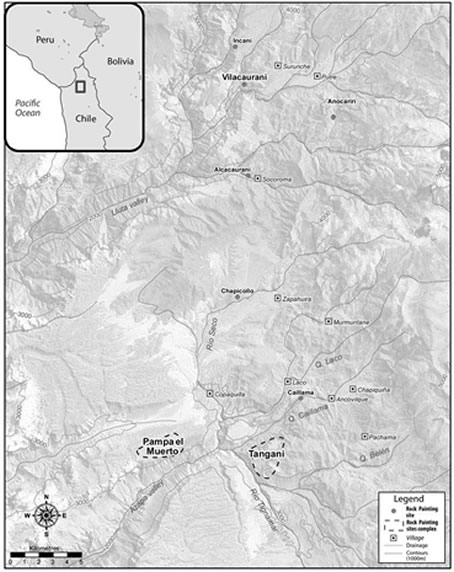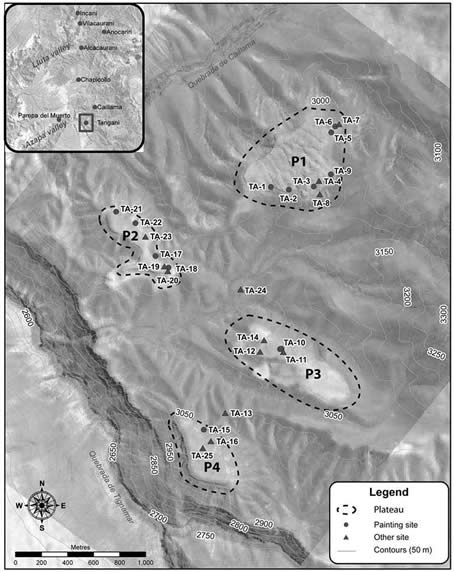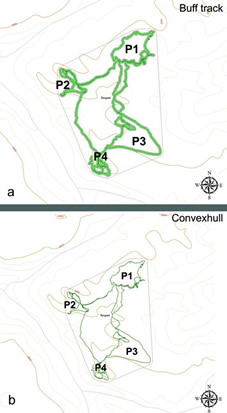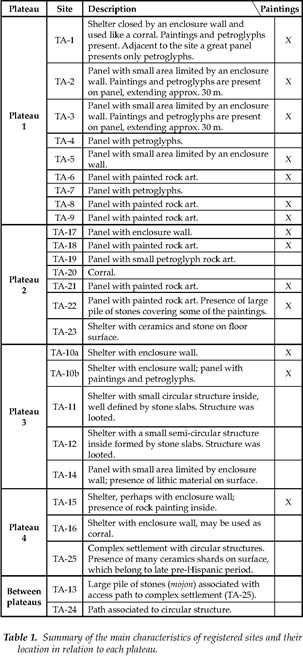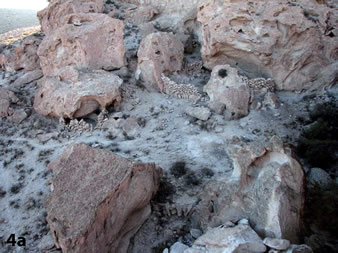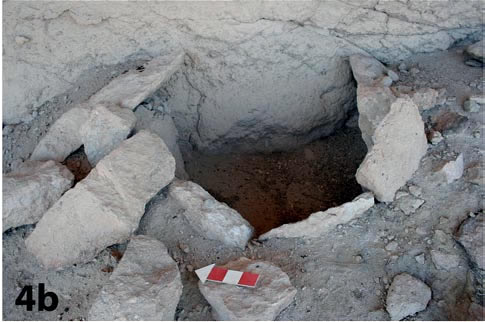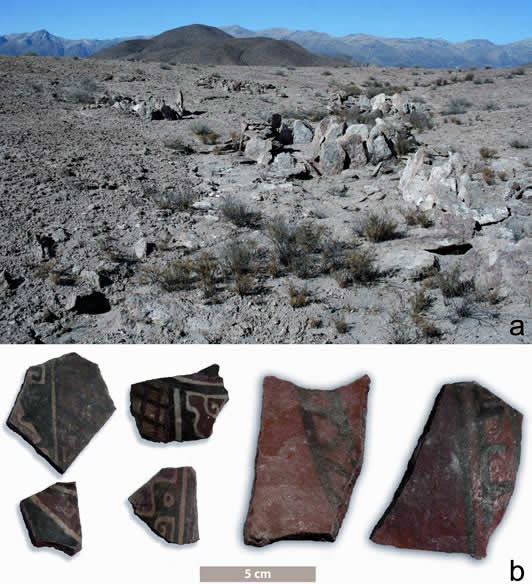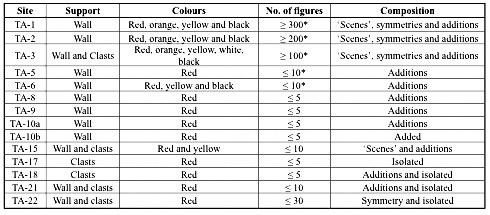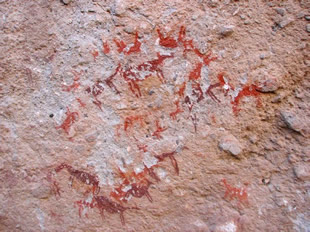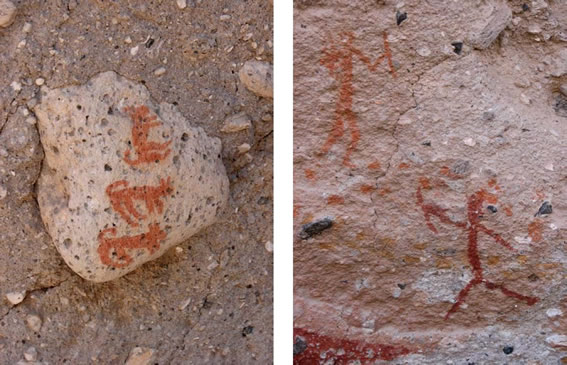
|
Figure 7. Figures on clast at Tangani 21. |
Figure 8. Anthropomorphs carrying ‘weapons’. |
In terms of images, the panels found around the first mountain plateau (TA-1 to TA-3) display the largest number of figures and/or motifs, including anthropomorphous and zoomorphic figures, interspersed with occasional geometric motifs. The images range in number from 100 to 300 or more, and come in a range of colours (orange, red, yellow, white and black; Table 2). The remaining sites contain fewer figures, all of them painted in a single colour, red (Table 2).
While painting is the most common technique used to produce the rock art of Tangani, the large number of petroglyphs found at sites TA-1, 2 and 3 also bears mention. Indeed, the vast majority of petroglyphs found in the Tangani area were found at these sites, as well as TA-4, 5, and 6, with a few more found at TA- 19. The petroglyphs are particularly relevant for two reasons: first, because they are concentrated around plateau 1, and second, because they are similar to the rock art found in lower-lying lands in northern Chile, as already mentioned.
The composition of the panels is also linked to the number of figures represented; for example, sites with more paintings also contain apparent scenes, symmetrical arrangements and additions, while sites with fewer images display mainly additions, with occasional ‘scenes’ (TA-15) and symmetrical depictions (TA-22). Most of the scenes apparently depict hunting, in one of two compositional forms: collective hunting, in which a camelid figure is ‘surrounded’ by anthropomorphous figures, in stationary pose; and ‘scenes’ defined by the presence of one or more camelids ‘pursued’ by anthropomorphs in apparent motion, carrying possibly spears or spear throwers (Fig. 8). The symmetrical paintings are compositions with anthropomorphs copied repeatedly to form a line. These have been found at various sites, including TA-1 and TA-2. Similar though more complex compositions are found at site TA-22, where anthropomorphous figures have been copied repeatedly and framed with broken or unbroken lines (Fig. 9). On the same panel, another ‘human’ figure can be seen at the centre of several concentric circles, which also enclose numerous lines or points within the circles (Fig. 10).
The re-discovery and recording of new sites with paintings at Tangani provides evidence of a degree of variability in the use of rock support, colour and composition. Our review of the recorded sites enhances the understanding of Mostny and Niemeyer’s findings, and suggests mainly that there is insufficient evidence to support the existence of a single ‘Arica Sierra style’ (Sepúlveda 2008, 2009). In contrast to the previous authors’ findings, the authors of the present study encountered a wide variety of paintings that are not polychrome but painted in distinct colours and tones. Indeed, most of the paintings are actually monochrome, though a few are bichrome. Observing the forms only, we find not only the existence of camelids attributable to what has been variously called the Andean tradition (Guffroy 1999) or ‘hunter art’ (Klarich and Aldenderfer 2001), ordescribed as similar to art found in the Atacama area, and consisting of ‘figurative images with a marked naturalistic and iconic emphasis’ (sensu Berenguer 1996; see also Yacobaccio et al. 2008); but also much more schematic figures, with a minor but notable presence of geometric motifs.
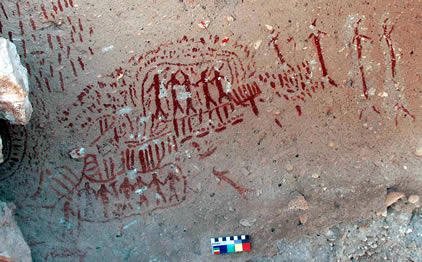
Figure 9. Detail of panel at Tangani 22: anthropomorphous representations,
repeated by symmetry and framed in complex geometric patterns.
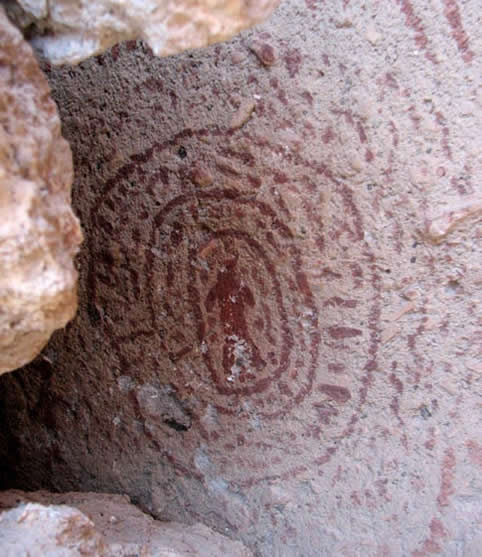
Figure 10. Detail of panel at Tangani 22: single
anthropomorphous representation framed in complex
geometric patterns.
In regard to the presumed scenes depicted, as well as chacu or collective hunting in which the prey is surrounded hunting with bolas, there are apparent scenes with ‘human’ figures holding ‘bows’, ‘mounted quadrupeds’, juxtaposed camelid figures, and anthropomorphous figures in symmetric configurations or framed within geometric forms, among other designs.
The type of rock support used is also worth noting and has not been analysed previously. Recording the media used for the paintings enables not only their differentiation but also their different compositional systems.
In summary, the new paintings of the rockshelters TA-8, 9, 10b, TA-15, TA-17, TA-18, TA-21 and TA-22 are of particular importance because of the different patterns of composition, colour and rock support they employ, which differ from those observed at sites TA-1 to TA-7, previously recorded by Niemeyer (1972).
Styles and stylistic groups in Tangani
Based on the descriptions given above, the different styles and stylistic groups present can be summarised as follows. Although this systematisation is illustrated with examples taken from the rock paintings found at Tangani, the same set of groupings can be applied to other rock art sites in the Precordillera zone (Andean Precordillera), such as Pampa El Muerto, Vilacaurani, Incani, Anocariri, and Alcacaurani (Niemeyer 1972; Santoro and Dauelsberg 1985; Sepúlveda 2008, 2009, in press; Sepúlveda et al. 2009b). Furthermore, a putative chronological development is proposed, its relation to the historic and socio-cultural processes attributable to the Precordillera and the highlands of Arica.
It must first be made clear that this analysis does not reject the possible existence of an ‘Arica Sierra style’, but rather highlights the need to define such a style as a subset of a ‘naturalistic stylistic group’ (S1), composed of two different styles (E1 and E2) and a second stylistic group (S2) which must still be defined.
The first of these styles, which we label E1, includes most of the painted representations of camelids found in the Precordillera region. The animals are depicted with clear anatomical features (the shape of the abdomen and the joints of the legs), and are arranged in complex ‘scenes’ that include large numbers of individuals, either in a line or in ‘random’ arrangements (Fig. 11). These camelids are often depicted together with anthropomorphs, which are represented by simple line drawings, as seen from the front and without animation of posture (Fig. 12). These human figures normally appear in groups, either side by side or surrounding an animal.
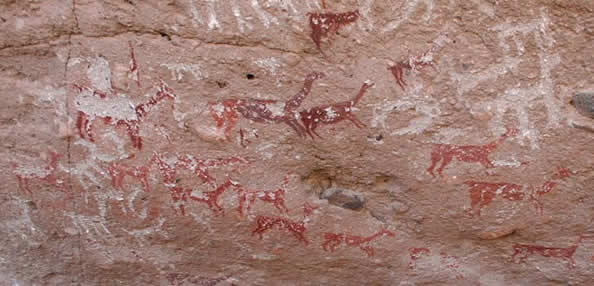
Figure 11. Style E1 of ‘naturalistic’ group style S1: camelids with anatomical traits implied, Tangani 6.
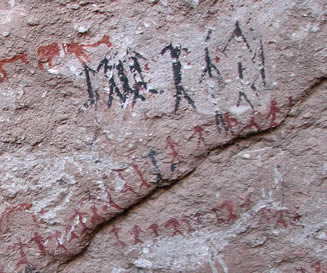
Figure 12. Style E1 of first ‘naturalistic’ group style S1: anthropomorphous
representation ‘hombres palotes’ repeated by symmetry, Tangani 1.
These paintings are found under rocky overhangs and on vertical rock faces of narrow ravines, probably indicating places most suitable for hunting camelids by driving them into enclosed spaces, as presumed practiced in the Late Archaic period (Santoro and Chacama 1984; Santoro and Dauelsberg 1985; Muñoz and Briones 1996). This theory was upheld by Santoro and Dauelsberg, who mention the finding of a painted block under the Patapatane overhang, clearly associated with the strata and dated to 4890 ± 130 bp; as well as a gourd fragment containing red iron oxide pigment, possibly used to create the paintings at the Guañure site and dated to 4330 ± 105 bp. Finally, they mention two datings of charcoal at Puxuma, of 4240 ± 95 bp and 4010 ± 100 bp, placing all these finds in the Late Archaic period (Santoro and Dauelsberg 1985: 73). Other, more recently obtained dates of possible relevance can be added to these, with occupation evidence from Pampa El Muerto 8 dated to approximately 4500 BCE, and from Tangani 1 ranging from 4400 to 4200 BCE (Sepúlveda et al. 2009b), confirming the presence of human occupation of the rockshelter sites where paintings of these styles are found, but without proof that they relate to the rock art.
Interpretation of these finds attributes them to a stylistic pattern corresponding to hunter-gatherer groups. The sites where such paintings were made would have been occupied in a transitory and seasonal manner, as is shown by the relative paucity of the deposits and the presence of multiple micro-events related to small fires, indicating the only occasional presence of individuals (García and Sepúlveda 2009; Sepúlveda et al. 2009a).
The second style we propose, E2, depicts camelids with equally well defined anatomical characteristics in regard to abdomen shape, but generally not in regard to leg joints. The animal figures are smaller, and the panels display fewer animals. Scenes often show groups of camelids being ‘pursued’ by anthropomorphs, which are shown as line drawings in profile, apparently in the act of running and carrying hunting weapons such as spears or bows (Fig. 13). E2 paintings tend to be smaller than those of E1, and have been found at a number of locations at Tangani, such as TA-15, as well as other sites such as Anocariri 2. These paintings probably correspond to a chronological range in the Formative period (near the beginning of the common era), a time when the use of bows and arrows tended to become more common.
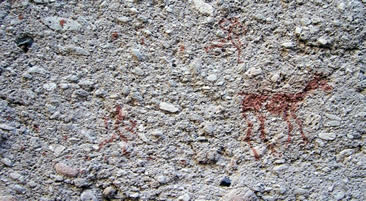
Figure 13. Style E2 of first ‘naturalistic’ group style S1: ‘scene’ of camelid and
anthropomorphous figures, Tangani 15.
In accordance with the hypothesis of Schiappacasse and Niemeyer, and based on research conducted at Itiza, this style could be attributed more specifically to an agricultural-pastoral tradition: ‘… just as was found at Piñuta, the Itiza rockshelter can be understood to be part of a settlement system of agriculturalpastoral villages, where hunting was also practised’ (Schiappacasse and Niemeyer 1996: 274). However, the authors do not propose locations for such villages or any origins of these settlements, leaving a significant question unanswered regarding the origin of the hunters. Rather, they support their hypothesis attributing the Itiza paintings to the Formative period, starting 1630 ± 60 bp (Schiappacasse and Niemeyer 1996). These dates coincide with a recent dating from Pampa El Muerto 8 (Sepúlveda et al. 2009a), as well as previous findings made at Piñuta by Santoro and Chacama (1982): 2520 ± 90 bp and 2540 ± 180 bp.
Santoro and Chacama (1982) shed further light on the origins of these peoples with the discovery of a ceramic vessel made with a vegetable-based clay softening agent, in a style similar to finds attributed to the coastal communities of the Early Formative period (1400–500 BCE). However, this enigmatic piece could be interpreted in two different ways: it either suggests a coastal origin for the hunters depicted in the highland rock paintings; or points to the interaction of two separate groups, one on the coast and the other inhabiting the higher Precordillera, Altiplano and Puna environments. Santoro and Chacama favour the former hypothesis, stating that ‘the camps in the caves […] were probably part of a larger settlement pattern, based on small nuclei of semi-sedentary villages’ (1984: 96). However, the second possible hypothesis is equally valid, particularly in light of the similarities between the paintings found in the Precordillera of Arica and those from southern Peru (Aldenderfer 1987, 1998; Guffroy 1999; Klarich and Aldenderfer 2001; Ayca Gallegos 2004). It is therefore feasible to propose the existence of specific highland groups, and this theory suggests that the ‘more naturalistic’ rock paintings indicate a level of mobility of hunter groups along the length of the Precordillera transect. Consequently, as Aldenderfer (1987) proposes, the number of anthropomorphs in these paintings could reflect changes in the usage of sites over time, as well as the highland groups’ adoption of new food supply strategies — processes that can be understood through investigation of the semi-naturalistic rock paintings of the Precordillera. These changes began at some time during the Archaic period (Aldenderfer 1989, 1998) and carried on through Formative period (1400 BCE – 300 CE). Unlike the development processes of the coastal groups, which moved towards more complex societies (Muñoz 2004) or more structured groups (Santoro 2000), the highland peoples maintained a way of life highly dependent on the local fauna, through either hunting or pastoralism (Kuznar 1990), complemented by the exploitation of plants native to these highland regions (García and Sepúlveda 2009).
Finally, the second stylistic group (S2), which exhibits greater diversity and requires a more precise description, includes images of camelids depicted with less accentuated anatomical features, and rarely placed in ‘naturalistic scenes’. Some of the camelid depictions seem largely schematic, with rectangular bodies and legs represented by simple lines, grouped one behind the other (Fig. 14), reminiscent of the ‘style’ known as ‘herder art’ (‘arte de pastores’; Klarich and Aldenderfer 2001). Although some paintings may depict transport or trade caravans, no clear evidence has been found to confirm this.
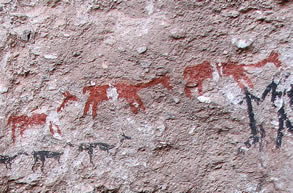
Figure 14. Example of second stylistic group S2: red camelids of Tangani 1.
Although rock paintings from the Precordillera region do not exhibit depictions of caravans, like those commonly found around the Loa River (Berenguer 2004), it has still been suggested that the paintings are connected with trade routes in the far north of Chile. In particular, Muñoz and Briones (1996) allude to paintings at the Vilacaurani site, which ‘presents an unusual geographical situation due to its association with the pre-Hispanic period’s most significant transport route, the Ruta Precordillerana (n°1)’. They claim that the region would have been the site of extensive and significant transport activities since early periods (Archaic period), activities that ‘have continued in the region to the present day’ (1996: 64). The authors make similar claims regarding the sites at Pampa El Muerto, located on another major pre-Hispanic trail that linked Copaquilla with Alto de Livilcar. According to this theory, the overhangs where the paintings are found would have been ‘inhabited sporadically in historical times, [although] the presence of such pictograms shows that the site was used by caravan traders and late hunters. Evidence such as markas and apachetas [types of cairns of spiritual and cultural significance in the region], the use of rockshelters, and pictograms, indicate that the space was being used actively before 2000 BCE’ (Muñoz and Briones 1996: 64). This theory suggests that mobility and caravan traffic could have been related to some of the paintings found in the Precordillera, but findings at Tangani have yet to provide any material confirmation for this hypothesis.
Like the camelids in the second stylistic group (S2), the anthropomorphs depicted are widely variable: they can appear face-on or in profile, occasionally with elements of ‘clothing’ and ‘headdresses’. The ‘human’ figures generally appear alone (Fig. 15), or are associated with small numbers of animals.
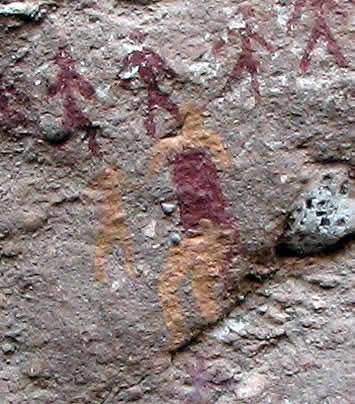
Figure 15. Anthropomorphous representation of second stylistic group S2: Tangani 1.
These paintings may date from Regional Development period (1000–1350 CE), related mainly to pastoralism in areas peripheral to major centres of population in the Precordillera region, and can help describe a settlement pattern that is still incompletely understood, relating mainly to camelid herding activities.
Nonetheless, it would be a mistake to neglect the importance of an extensive settlement (TA-25), which is of particular relevance in an area that stands out for its large number of rock painting sites. Although the site was not permanently occupied, it probably came to reaffirm the strong symbolism associated with the Tangani area, particularly in the Regional Development period. Activities undertaken at TA-25 were without doubt associated with certain concepts and sentiments that are hard for modern people to understand. However, the location commands a view over all of the main mountains of Tangani, the trails to Chapiquiña and Belén, and the confluence of the San José and Tignamar rivers. Other symbolic structures are present, including chullpas (funeral towers) that may have been oriented towards TA-25 (Romero, pers. comm. 2009). This settlement undoubtedly marked an important site for the locals’ interpretation of a place that has been considered of great importance since the Archaic period.
The final component of the second stylistic group (S2) is the presence of tarucas (or North Andean Deer, Hippocamelus antisensis), visually very similar to camelids but distinguished by its antlers (Fig. 16). This suggests that hunting activities continued, probably remaining an important activity into Regional Development period.
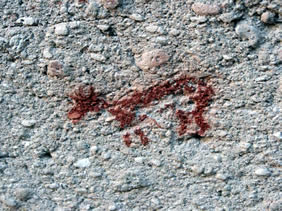
Figure 16. Tarucas from second stylistic group S2, Tangani 15.
The Tangani sites show a progressive replacement of painting with petroglyphs, attributed to this period, as is seen in the superposition of engraved figures over paintings in TA-1, 2 and 3, along with the complete absence of paintings made over prior petroglyphs.
Apart from these stylistic groups and styles, certain paintings include features that have yet to be found at other sites, such as the overriding symmetry in the composition including anthropomorphous figures at TA-22 (Figs 9 and 10), which is unique in the Arica Precordillera region, but strongly reminiscent of the ‘Cueva Blanca style’ found in the Río Salado subregion (Gallardo et al. 1999; Gonzalez 2005). Finally, certain depictions include a wide variety of feline figures (TA-21 and 22, as well as at other sites such as Vilacaurani), which have yet to be placed into any stylistic or chronological category.
Open questions
Although the information presented here does allow certain patterns to be discerned, it also shows that attributing a site’s rock art to a particular ‘cultural period’ remains a complex problem. Dating has demonstrated that many sites underwent several periods of occupation throughout the region’s pre- History. But we also observe some recurrence in the contextual association, in the dating and the style of representation associated to each site that allowed us to propose a chronological attribution to style and stylistic group identified.
We are conscious that the clear reuse of spaces where paintings had been made calls for caution in attributions, as different works at a single site may date back to very different periods — as seems to be the case at Tangani 1. Here, we can observe a high incidence of superposition of one work over another, and an evident stylistic variability of paintings. We recognise that our proposition would be reconsidered in the light of new discoveries and more precision of contextual association, for example by studying the presence of possible paint residues in the archaeological stratigraphy.
Also, in order to enhance understanding and attributions of the E1 and E2 styles, it would be useful to determine whether the camelids depicted were wild or domestic (Berenguer 1996; Klarich and Aldenderfer 2001; Gallardo and Yacobaccio 2005), and thus describe the interrelation of these paintings with the socio-cultural and economic chronology of
Acknowledgments
This work was prepared under Fondecyt Project 11060144. We wish to thank all of those who assisted us on the journey to Tangani, Paz Casanova, Trini Martinez i Rubio and Leslia Veliz. Particular thanks to Rolando Ajata for all maps presented in this paper and to Alvaro Romero, Calogero Santoro and Andrés Troncoso for the first reading and their comments. We also thank the three RAR referees who contributed significantly to the improvements of this paper and its final version.
![]()
—¿Preguntas, comentarios? escriba a: rupestreweb@yahoogroups.com—
Cómo citar este artículo:
Sepúlveda R, Marcela A., Saintenoy, Thibault y Faundes, Wilfredo.
Rock paintings of the precordillera region of northern Chile.
En Rupestreweb, http://www.rupestreweb.info/precordilleraschile.html
2012
BIBLIOGRAFÍA
Aldenderfer, M. 1989. Cronología y definición de fases de Asana, sur del Perú. Chungara 24-25: 13-35.
Aldenderfer, M. 1998. Montane Foragers. Asana and the South Central Andean Archaic, University of Iowa Press, Iowa City.
Aschero, C. 2006. De cazadores y pastores. El arte rupestre de la modalidad río Punilla en Antofagasta de la Sierra (Puna meridional, Argentina). In D. Fiore and M. M. Podestá (eds), Tramas en la piedra, pp. 103–140. Sociedad Argentina de Antropología y Asociación Amigos del Instituto Nacional de Antropología, Buenos Aires.
Ayca Gallegos, O. R. 2004. el arte rupestre de Vilavilani. Municipalidad Distrital de Palca, Palca-Tacna.
Berenguer, J. 1996. Identificación de camélidos en el arte rupestre de Taira: ¿Animales silvestres o domésticos? Chungara 28 (1-2): 85-114.
Berenguer, J. 2004. Cinco milenios de arte rupestre en los Andes atacameños: imágenes para lo humano, imágenes para lo divino. Boletín del Museo Chileno de Arte precolombino 9: 75-108.
Gallardo, F. 1996. Acerca de la interpretación en arte rupestre. Boletín de la Sociedad Chilena de Arqueología 23: 31-33.
Gallardo, F. 2001. Arte rupestre y emplazamiento durante el Formativo Temprano en la Cuenca del río Salado (desierto de Atacama, norte de Chile). Boletín del Museo Chileno de Arte precolombino 8: 83–98.
Gallardo, F. 2004. El arte rupestre como ideología: un ensayo acerca de pinturas y grabados en la localidad del río Salado (desierto de Atacama, norte de Chile). Chungara 36(1): 427-440.
Gallardo, F. 2009. Sobre la composición y la disposición en el arte rupestre de Chile: consideraciones metodológicas e interpretativas. Magallania 37(1): 85-98.
Gallardo, F. and H. Yacobaccio 2005. Wild or domesticated? Camelids in early formative rock art of the Atacama Desert (northern Chile). latin American Antiquity 16(2): 115-130.
Gallardo, F., C. Sinclaire and C. Silva 1999. Arte rupestre, emplazamiento y paisaje en la Cordillera del Desierto de Atacama. In J. Berenguer and F. Gallardo (eds), Arte rupestre en los Andes de Capricornio, pp. 57-96. Museo Chileno de Arte Precolombino, Santiago.
García, M., J. Gardeweg Clavero and G. Hérail 2004. Carta geológica de Chile. Serie geología básica n°84. Hoja Arica- Región de Tarapacá. escala 1:250.000, Subdirección Nacional de Geología, Servicio Nacional de Geología y Minería, Santiago de Chile.
García, M. and M. Sepúlveda 2009. Contextos vegetales asociados a aleros pintados de la precordillera de Arica (extremo norte de Chile). Unpubl. MS.
Gonzalez, P. 2005. Códigos visuales de las pinturas rupestres Cueva Blanca: formas, simetría y contexto. Boletín del Museo Chileno de Arte precolombino 10(1): 55-72.
Guffroy, J. 1999. el arte rupestre del antiguo perú. Travaux de l’Institut de Francais d’Études Andines. IFEA-IRD, Lima.
Klarich, E. and M. Aldenderfer 2001. Qawrankasax Waljawa: arte rupestre de cazadores y pastores el río Ilave (sur del Perú). Boletín del Museo Chileno de Arte precolombino 8: 47-58.
Kuznar, L. 1990. Pastoralismo temprano en la sierra alta del Departamento de Moquegua, Perú. Chungara 24-25: 53-68.
Lorblanchet, M. and P. Bahn (eds) 1993. Rock art studies: the post-stylistic era, or where do we go from here? Oxbow Monograph 35, Oxbow Books, Oxford.
Mostny, G. and H. Niemeyer 1983. Arte rupestre de Chile. Serie El Patrimonio Cultural Chileno, Colección Historia del Arte Chileno, Depto. de Extensión del Ministerio de Educación, Santiago de Chile.
Muñoz, I. 2004. El período Formativo en los valles del norte de Chile y sur del Perú: nuevas evidencias y comentarios. Chungara 36, Supl. Especial Tomo I: 213-225.
Muñoz, I. and L. Briones 1996. Poblados, rutas y arte rupestre precolombinos de Arica: descripción y análisis de sistema de organización. Chungara 28(1-2): 47-84.
Muñoz, I. and J. Chacama 2006. Complejidad social en las alturas de Arica. Territorio, etnicidad y vinculación con el estado inca. Ediciones Universidad de Tarapacá, Arica.
Niemeyer, H. 1972. las pinturas de la Sierra de Arica. Editorial Gerónimo de Bibar, Editorial Universitaria, Santiago de Chile.
Núñez, L. 1981. Asentamientos de cazadores-recolectores tardíos en la Puna de Atacama: hacia el sedentarismo. Chungara 8: 137-168.
Núñez, L. 1983. Paleoindian and Archaic cultural periods in the arid and semiarid region of northern Chile. In Advances in World Archaeology II, pp. 161-201. Academic Press.
Núñez, L. 1992. Ocupación arcaica en la Puna de Atacama: secuencia, movilidad y cambio. In B. Meggers (ed.), prehistoria Sudamericana. Nuevas perspectivas, pp. 283-307. TAXACUM, Washington D.C.
Núñez, L., I. Cartajena, C. Carrasco, P. de Souza and M. Grosjean 2006. Patrones, cronología y distribución del arte rupestre arcaico tardío y formativo temprano en la Cuenca de Atacama. In D. Fiore and M. M. Podestá (eds), Tramas en la piedra, pp. 191–204. Sociedad Argentina de Antropología y Asociación Amigos del Instituto Nacional de Antropología, Buenos Aires.
Raphael, M. 1986. Trois essais sur la signification de l’art pariétal paléolithique. Editions Le couteau dans la plaie / Kronos, Limoges.
Santoro, C. 1983. Cave and rockshelter art study, Preliminary report supported by a Grant from the National Geographic Society No. 2623/83.
Santoro, C. 1989. Antiguos cazadores de la puna (9.000 a 6.000 a.C.). In J. Hidalgo, V. Schiappacasse, H. Niemeyer, C. Aldunate e I. Solimano (eds.), Culturas de Chile. prehistoria, desde sus orígenes hasta los albores de la conquista, pp 33-56. Editorial Andrés Bello, Santiago de Chile.
Santoro, C. 1992. Study of rockshelter art in northern Chile, final report (unpubl.). Supported by a Grant from National Geographic Society N°2983/84.
Santoro, C. and J. Chacama 1982. Secuencia cultural de las tierras altas del área centro sur Andina. Chungara 9: 22-45.
Santoro,C.andJ.Chacama1984.Secuenciade asentamientos precerámicos del extremo norte de Chile. estudios Atacameños 7: 85–103.
Santoro, C. and P. Dauelsberg 1985. Identificación de indicadores tempo-culturales en el arte rupestre del extremo norte de Chile. In C. Aldunate, J. Berenguer and V. Castro (eds), estudios en arte rupestre -primeras jornadas de arte y arqueología, pp. 69-86. Museo Chileno de Arte Precolombino, Santiago de Chile.
Santoro, C. and L. Núñez 1987. Hunters of the Dry Puna and the Salt Puna in northern Chile. Andean past 1: 57-109.
Santoro, C. and V. Standen 1999. proyecto: catastro y evaluación del patrimonio cultural arqueológico de la provincia de parinacota. II Informe SNASPE- CONAF, Arica.
Schiappacasse, V. and H. Niemeyer 1996. Las pictografías de los aleros de Itiza y de Mullipungo de la Sierra de Arica. Chungara 28(1-2): 253-276.
Sepúlveda, M. 2008. Pinturas rupestres de la Precordillera de Arica (norte de Chile). Re-evaluación a 40 años de la obra pionera de Hans Niemeyer. SiARB Boletín 22: 68-79.
Sepúlveda, M. 2009. Estilo v/s agente: rescate del individuo en la práctica rupestre. Unpubl. MS.
Sepúlveda, M. in press. La tradition naturaliste des peintures rupestres des groupes chasseurs-cueilleurs de l’extreme nord du Chili. In D. Vialou (ed.), Préhistoire des Amériques. Cahier des Travaux Historiques et Scientifiques (CTHS), Paris.
Sepúlveda, M., M. P. Casanova and S. Touron 2009a. Conservation diagnosis: a new methodology applied in the study of rock art in the Precordillera of Arica (northern Chile). Unpubl. MS.
Sepúlveda, M., M., M. García and C. Carrasco 2009b. Contextos arqueológicos y pinturas rupestres de la precordillera de Arica (extremo norte de Chile). Unpubl. MS.
Sepúlveda, M., E. Laval and M. Menu 2009c. Caracterización química de las pinturas rupestres de la precordillera de Arica (extremo norte de Chile). Unpubl. MS.
Touron, S. 2009. Chili. Région de Tarapaca - Sierra deArica. État sanitaire des peintures rupestres. Unpubl. Report No. 1242A, Laboratoire de Recherche des Monuments Historiques, Paris.
Valenzuela, D., C. Santoro and A. Romero 2004. Arte rupestre en asentamientos del período Tardío en los valles de Lluta y Azapa, norte de Chile. Chungara Vol. 36(2): 421-437.
Vialou, D. 1999. L’art rupestre chez les peuples chasseurs. Approche théorique du phénomène. In D. Sacchi (Ed.), L’art paléolithique à l’air libre, le paysage modifié par l’image, p. 181-185; GAEP et GEOPRÉ, Tautavel.
[Rupestreweb Inicio] [Introducción] [Artículos] [Noticias] [Mapa] [Investigadores] [Publique]
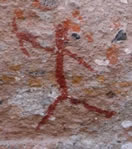 Rock paintings of the precordillera region of northern Chile
Rock paintings of the precordillera region of northern Chile